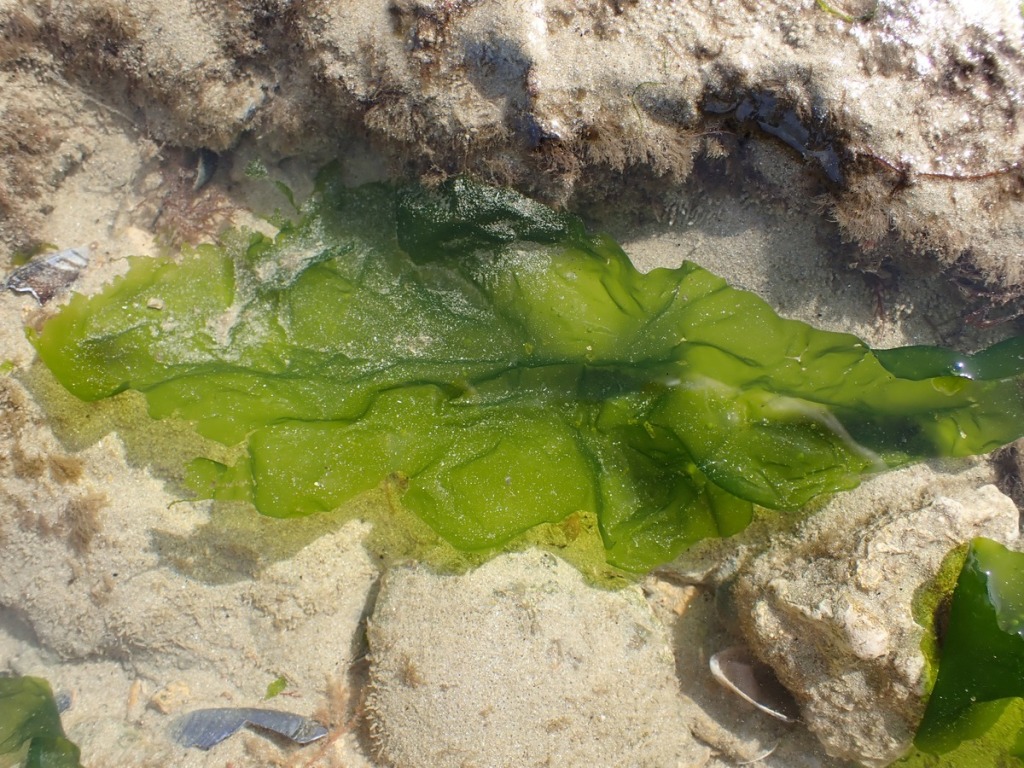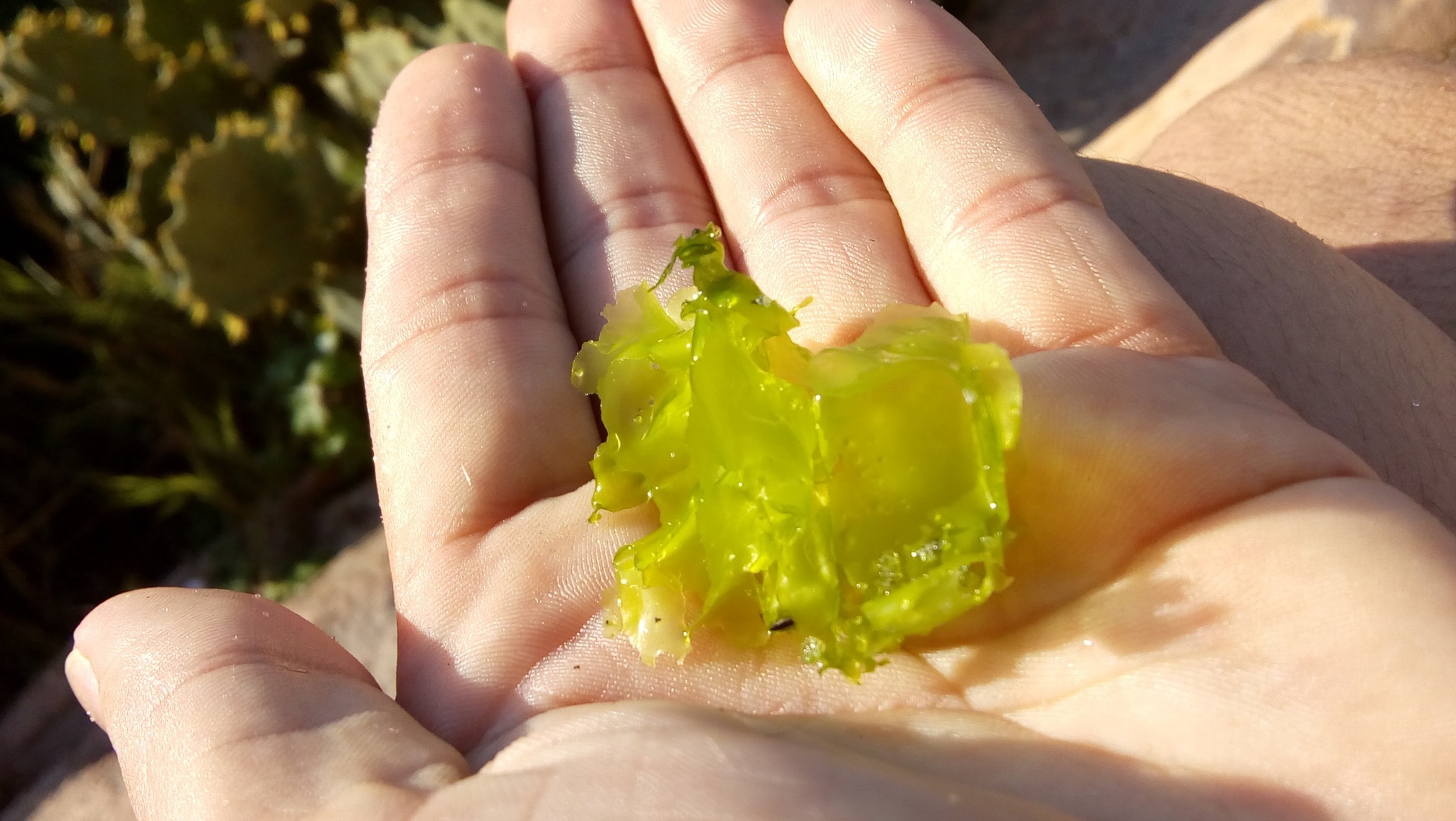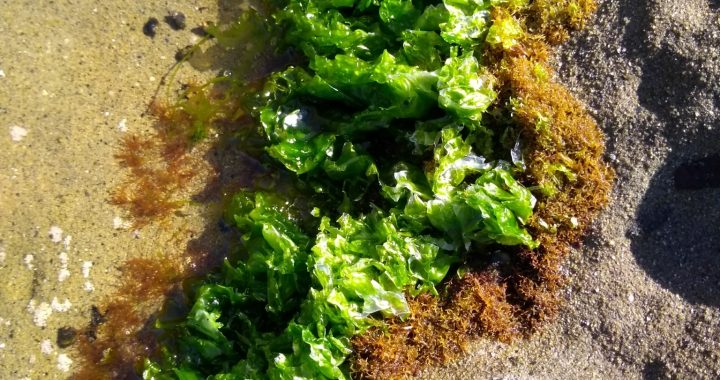If you are used to go to the beach, especially rocky shores, you my have seen some small green “leafy” things growing on the rocks and sometimes washed ashore that look like small lettuce plants or something like that. Well, those are green algae of the species Ulva lactuca, commonly known as sea lettuce. However, as this name is also used for other species of Ulva, the name broadleaf sea lettuce is sometimes used to refer to this specific species.

The thallus of the broadleaf sea lettuce is very thin and semitransparent, being only two cells thick. It often has a ruffled or torn margin and can grow up to 18 cm in length and 30 cm in width, but it is normally much smaller. It is attached to the substrate, often rocks, but sometimes other organisms, by a small disc-shaped holdfast.
As all plants, the broadleaf sea lettuce has a haploid phase (in which cells has only one chromosome of each) and a diploid phase (with two chromosomes of each per cell). Both phases have the same overall appearance, but the haploid plants are either male or female and release gametes into the water, which join to form a zygote, which will grow to form a diploid plant. This, in turn, releases movable spores (zoospores), which will germinate to produce new haploid plants.

The broadleaf sea lettuce has a worldwide distribution, being found in all continents and oceans. It is an edible alga and is particularly rich in iron and the amino acid histidine. However, one must have caution about where it is harvested for consumption, as it can accumulate heavy metals in polluted zones.

In nutrient-rich waters due to pollution, the populations of the broadleaf sea lettuce can grow very quickly and thousands of individuals may end up washed ashore. When they start to decompose, they emit toxic gases such as hydrogen sulfide, which may kill animals by hypoxia, i.e., lack of oxygen, as it inhibits cellular respiration. There are records of humans dying after walking near large amounts of decomposing algae.
Lifeforms often have this dual nature, and the same thing that can make you stronger can also kill you.
References:
Dominguez, H., & Loret, E. P. (2019). Ulva lactuca, a source of troubles and potential riches. Marine drugs, 17(6), 357. https://doi.org/10.3390/md17060357
Wikipedia. Ulva lactuca. Available at < https://en.wikipedia.org/wiki/Ulva_lactuca >. Access on 1 April 2021.

